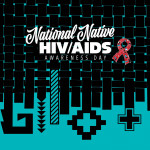2022 is NMAC’s (formerly National Minority AIDS Council) thirty-fifth anniversary as a leader in the fight to end the HIV epidemic in America. Our history is filled with the stories of heroes in the struggle. Over the next 10 months, the agency will talk about our founders, and outline the challenges and opportunities facing our work to end the epidemic.
By all reasonable standards, NMAC should not have survived. We have no big individual donors. Most of our support comes from the government and too few corporations. Like many minority-led agencies, our dependence on government/corporate funding makes us vulnerable. As we have witnessed, many of our peers closed their doors when government priorities shifted. Addressing this inequity is a 2022 priority for NMAC. We are working with the Black AIDS Institute, Latino Commission on AIDS, and the San Francisco Community Health Center to bring a portion of the Minority AIDS Initiative back to its original congressional Intent. We’ve hired Dr. Maya Cummings to lead the charge. COVID has once again exposed health disparities in communities of color. It is time to build a healthcare infrastructure that addresses these inequities. Ending the HIV epidemic in America should leave a legacy of prevention, healthcare, housing, and wrap around services in all the communities hardest hit by HIV. These services could be the foundation for improving the quality of life for all communities. Yes, we are thinking beyond HIV.
If COVID has taught us nothing else, we’ve learned it is important to have a healthcare infrastructure and wrap around services that are nimble and flexible with services that can pivot to any new challenges facing the world. That is the lesson from HIV: how to take something horrible to do something good. We have spent decades building an HIV infrastructure it would be foolish to dismantle. Once again HIV can lead by not only ending the HIV epidemic, but also working on the vanguard to determine best practices to pivot to any new challenge. COVID exposed our vulnerabilities. 2022 is about rethinking that paradigm.
What helped NMAC survive was our conferences. I’ve done a version of USCHA since 1987 when it started as the National Skills Building Conference. Conferences and meetings create an unrestricted funding stream that covers expenses that cannot be charged to the government or corporations. NMAC runs some of the largest meetings in our movement and we do it by prioritizing the communities hardest hit by HIV. Our meetings are more than another boring conference; our gatherings are a family reunion.
People hardest hit by HIV live at the intersection of HIVphobia, racism, homophobia, sexism, transphobia, and sexphobia. Too many have been rejected by their birth families, so NMAC works to build a family of choice, a family who will embrace and celebrate the diversity of our movement and its authenticity. No judgements, just love and respect. It is so simple in theory but, with the current culture wars, difficult to implement. In a world where “don’t say gay” is real, how do we educate about HIV? It is also a difficult time for too many of the communities we need to reach. The United States Conference on HIV/AIDS and the Biomedical HIV Prevention Summit are safe havens. It is not easy to do, and we often get it wrong, but we never give up. I think that’s part of the reason we’ve still here; we acknowledge our mistakes and work to do better. Quite frankly, the expectations on NMAC are the same expectations for health departments and federal agencies. We expect you to be our safe haven, a place where we are more than tolerated, we are celebrated. How to do it in this political environment will be a challenge, especially given what is happening in certain states.
When state or federal rules prevent you from saying certain things, maybe it’s time to use community. With a new national PrEP initiative, your ability to reach us is key to success. From NMAC’s perspective it is less about cost and more about outreach, particularly community-based outreach. I know I’ve been complaining about the lack of people of color on PrEP, but the latest numbers tell me to be concerned about the overall lack of people on PrEP. How do we reach the targets in the updated National HIV/AIDS Strategy and do it in a syndemic way with STDs and Hepatitis? NMAC looks to the White House for leadership as they prioritize community to figure out solutions.
I want to thank everyone who made these 35 years possible. NMAC gets to survive and` thrive because key leaders stood up and vouched for us at critical times. This work is very personal, sometimes too personal. I continue to fight in memory of all the friends I lost. They are too many to remember and they still haunt my dreams, but it’s getting better. Work at NMAC is how I move beyond the PSTD from the early days. I don’t think I will ever fully heal, but this work teaches me how to live with the loss by working to end the HIV epidemic in America.
Yours in the Struggle,
Paul Kawata








Comments
Comments